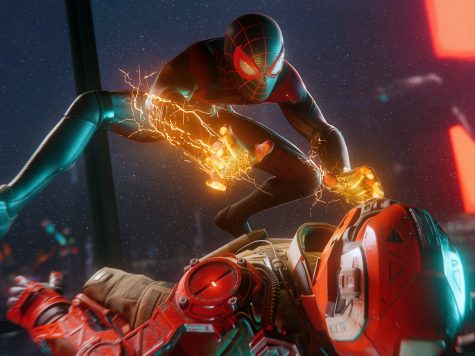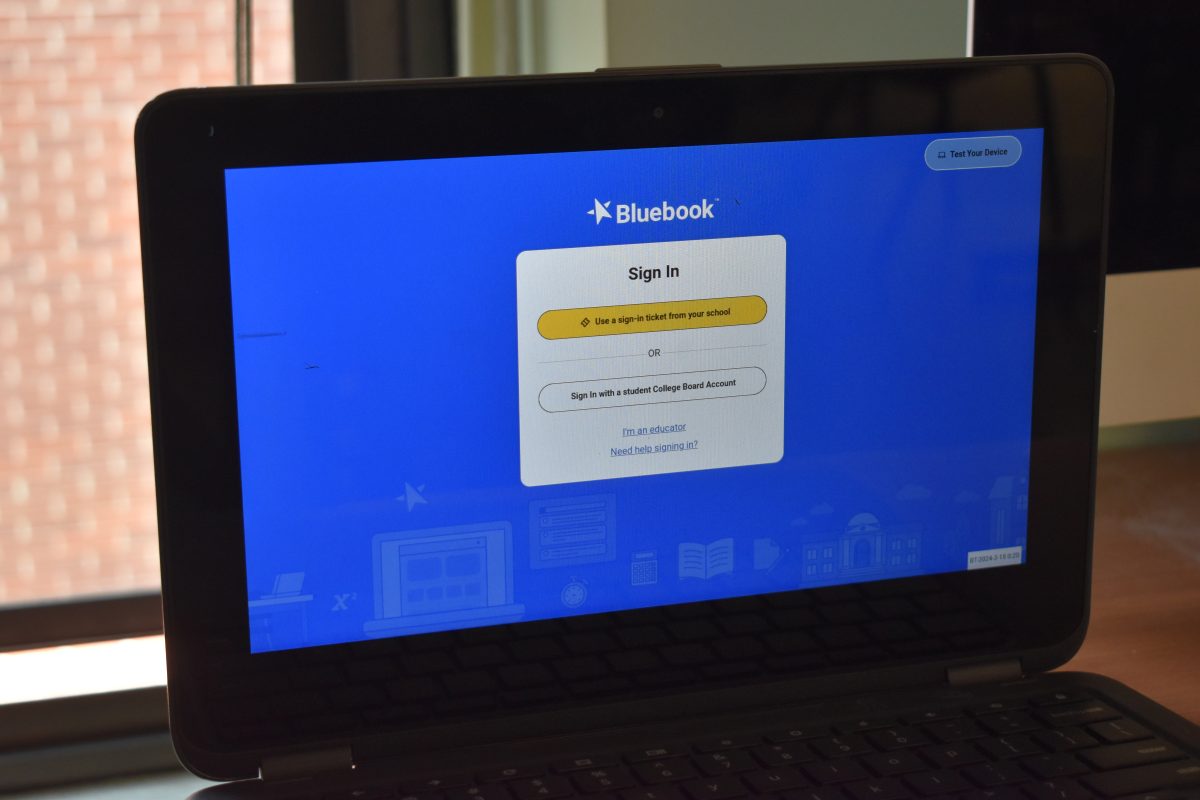Spider-Man: Miles Morales Review
November 19, 2020
I don’t typically do video game reviews. To be honest, I’ve never really been into video games my whole life. I’ve played some here and there but overall I’ve always been more invested in film and television. A rare event occurred in December of 2018 when I fell in love with Insomniac’s Spider-Man. It was a game just as, if not more, cinematic than many of the films I had seen in the last year. I found myself enjoying the game more than I had ever enjoyed any other game. I became deeply invested in the story, characters, and gameplay, rushing home from school every weekday in January so I could get back to swinging through New York. It was a feeling I had truly never felt before. Skip to November of 2020 where Playstation is releasing their newest console with a spinoff/sequel to 2018’s Spider-Man titled Spider-Man: Miles Morales. I was not able to obtain a PS5 (nor pay for one) but lucky for me, Playstation was nice enough to release the game on the PS4. So, this last weekend, I pushed through the whole game so I could let Clarion readers know what I thought of the game.
Picking up shortly after the events of the first game, teenager Miles Morales trains with Peter Parker to become the best Spider-Man he can be. When Peter takes a vacation, Miles takes on being New York’s only Spider-Man while he fights a mysterious group named “The Underground” and protects his neighborhood from destruction. From a gameplay standpoint, Spider-Man: Miles Morales is even better than its predecessor. Soaring by skyscrapers is more fun than ever as the updated web-swinging mechanics make the activity feel incredibly smooth and energetic. Details in how Miles swings tell everything about his character. As you watch him twist upside down and barely catch himself at the last minute, you can tell Miles is someone who is inexperienced but confident and just getting a hold of the reins. Possibly even better than the web-swinging is the combat.
Miles not only has the fighting skills of Peter Parker’s Spider-Man but also comes with a bio-electricity power known as the “Venom-punch.” Using the venom-punch is one of the most satisfying things I’ve ever done. As the whole screen slows down and Miles lunges at an enemy, you can feel the power of the electricity pulsing through his arm as he sends the villain flying. This power

evolves throughout the game and becomes more and more fun to use as the game progresses. Miles also has the ability to turn invisible, one of the few gameplay mechanics I found a bit lacking. I rarely used it other than in stealth missions and overall it feels somewhat underdeveloped. Other than that, the gameplay is top-notch all around and better than what the first Spider-Man game had to offer.
An aspect of the game I was slightly disappointed by was the length of the campaign. Instead of having the meat of the game be its main story, it’s filled with side missions that are a mix of good and bad. One of the side missions I really enjoyed was finding sound clips all through New York left by Miles’s Uncle to create a beat and then having to find where the sounds came from. The main reason I liked this activity was because after finding the source of each sound, Miles’s Uncle, Aaron Davis, would talk about his rocky relationship with Miles’s father who died in the previous game. This touch added extra emotional weight to the overall story of the game and really fleshed out the character. Even though a lot of the side missions were boring to play out, their strongest aspects followed this pattern by adding a small insight about the characters and world that made everything feel just a bit more fully developed.
My first reaction to the story of the game was mixed on completion of the campaign. I was disappointed by how small it felt compared to the first game, but with some time to reflect, I realized this may be its greatest strength. The story of Spider-Man: Miles Morales hones in on the idea of a “Friendly Neighborhood Spider-Man” being far more personal than its predecessor and focusing on messages about family, friends, and community. Unlike 2018’s Spider-Man, we get to meet the people that live in Miles’s neighborhood of Harlem making the conflict of the game far more impactful when Miles has to protect these characters from an evil energy company that sees his neighborhood as disposable. The game adds extra emotional complexity as Miles must face off against members of his family and friends, attempting to balance his lives as Miles and Spider-Man. I still prefer the story from 2018’s Spider-Man because of its bigger stakes and emotional punches that personally hit harder for me, but Spider-Man: Miles Morales has a story that is a worthy successor.
Spider-Man: Miles Morales doesn’t hit all of its marks, but as a follow-up to the 2018 game, it requires a playthrough. The game manages to retain the heart and values of the Spider-Man character and legacy while creating a new and engaging story that is sure to please fans. Its gameplay scores above and beyond being unbelievably fun to get your hands on, especially in combat and web-swinging (which makes up most of the game). The side activities may be tiresome and old, but they are able to add to the world-building of the game, even if it’s only by a little bit. Overall, Spider-Man: Miles Morales must be picked up by any fan of the original game. It’s another great installment into Insomniac’s Spider-Man universe, and I can’t wait to see what they come up with next.


























